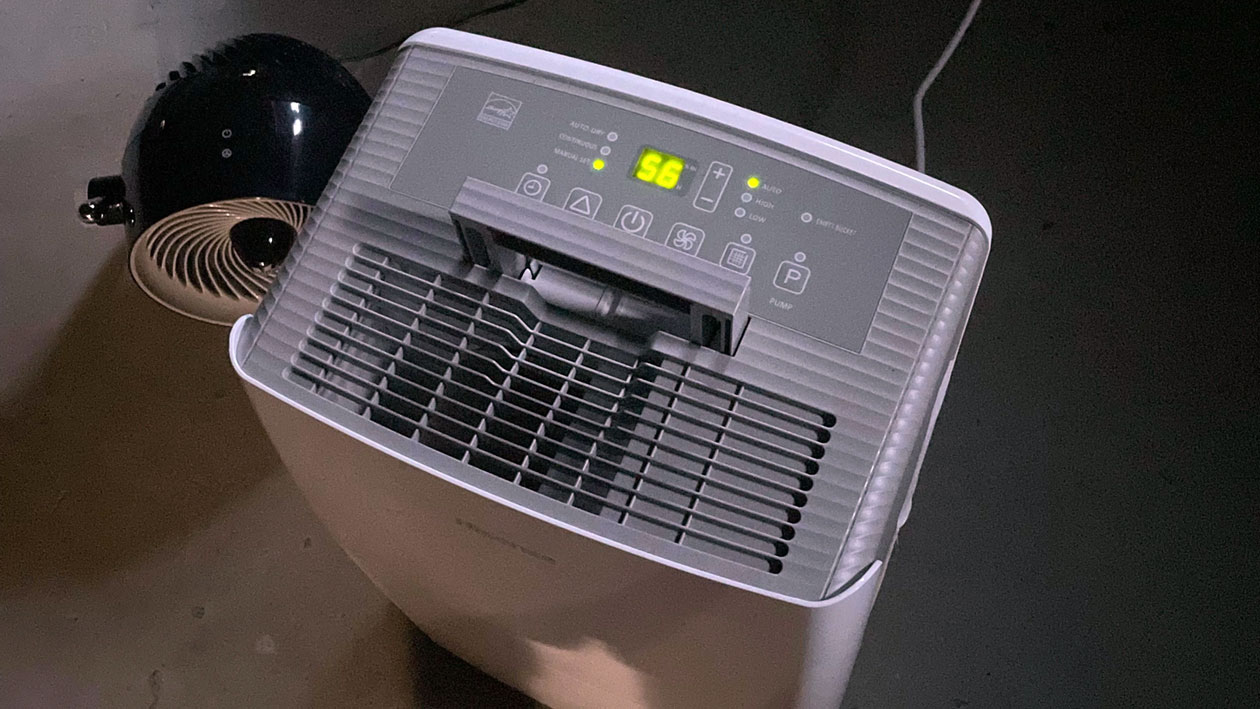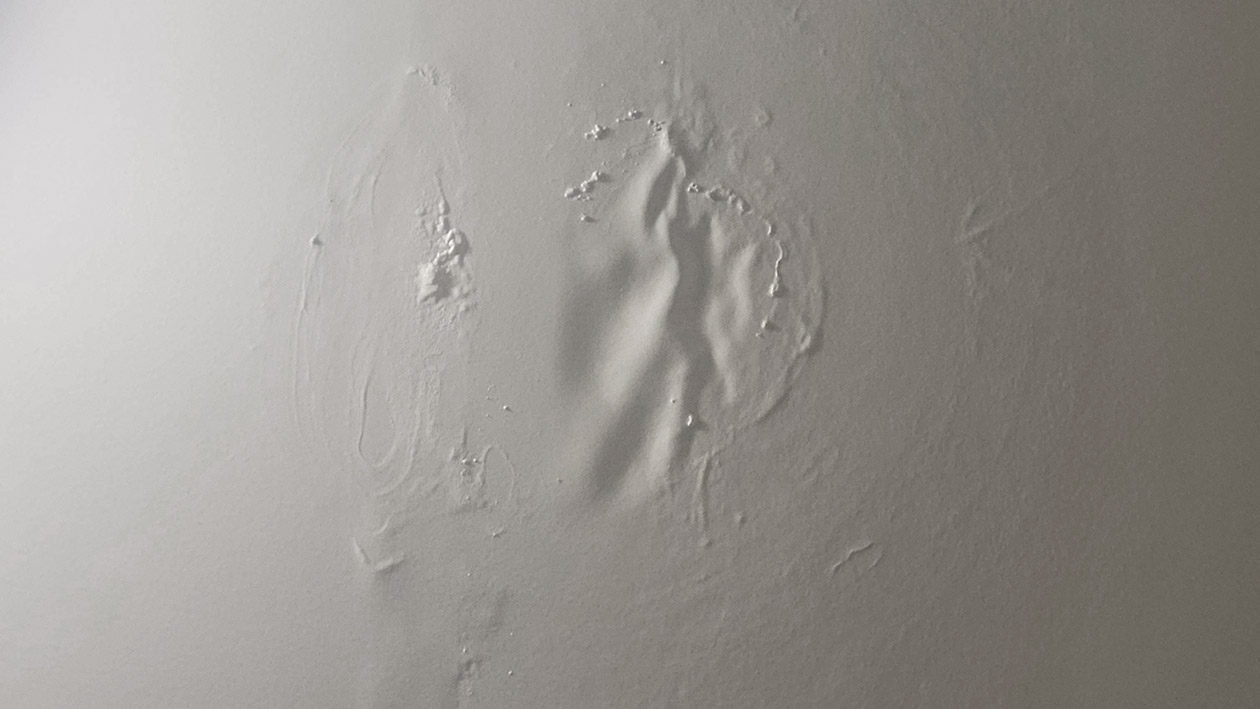Interior paint typically dries to the touch within 1-4 hours, depending on the type of paint. Latex and acrylic paints dry faster, while oil-based paints take longer (6-8 hours). However, it’s important to wait until the paint is fully cured before using the painted surface, which can take several days to weeks.
Factors Affecting Drying Time
Interior painting projects can be time-consuming, and knowing how long your paint will take to dry is key to getting everything done on schedule. Here’s a breakdown of the main factors that can speed up or slow down those drying times:
Humidity: It’s All About Moisture
- High Humidity: Excess moisture in the air means your paint has a harder time evaporating its water content. That means slower drying times. High humidity slows down both evaporation and coalescence (more on this shortly), extending drying and curing times.
- Low Humidity: Dry air helps your paint dry faster as the moisture evaporates easily.
Temperature: Getting the Right Conditions
- Ideal Range: The best temperature for painting in Australia is between 20°C and 25°C for optimal drying.
- Too Hot: Excessively hot temperatures can cause the paint to dry too quickly on the surface, leading to cracking or unevenness.
- Too Cold: Colder temperatures slow down the evaporation process, significantly extending drying times.
Ventilation: Let the Air Flow
- The Power of Airflow: Good ventilation helps whisk away evaporated moisture from the painted surface, promoting faster drying.
- Open Up: Open doors and windows, use fans, or consider a dehumidifier to boost airflow, especially in humid environments.
Coat Thickness: Thicker Means Longer
- Thin Layers: Multiple thin coats dry faster than a single thick one. This allows moisture to escape from each layer more easily.
- Patience Pays: Give each coat ample time to dry before applying the next for the best results.
Coalescing Solvents: Unifying the Paint Layer
Some water-based paints contain coalescing solvents, which aid in forming a strong film but can extend the curing time.
Research indicates that these factors can influence the drying rate of paint. For example, in a study on waterborne acrylic paints on bamboo laminated lumber, it was found that higher temperatures led to faster drying rates, while increased humidity slowed down the drying process.
Maz Nassimi, a professional painter at Dupaint Sydney says “Forget about slapping on one thick coat! Several thin layers dry way faster than one giant blob of paint. This is the secret to getting that project wrapped up quickly and avoiding those dreaded paint drips.”
Drying vs. Curing: Understanding the Full Picture
While it’s tempting to think paint is good to go as soon as it feels dry to the touch, there’s more to the story. Here’s the key difference between drying and curing:
Drying: This is the initial stage where the paint’s liquid components, primarily water or solvents, evaporate. The paint film feels dry to the touch, but the curing process hasn’t yet begun.
Curing: This is a much slower chemical process where the paint transforms. The paint binders harden, forming a strong, resilient film. This is when the paint reaches its full performance capabilities in terms of durability, scratch resistance, and washability. This deeper process involves something called coalescence, where the paint particles fuse and the binders solidify. The paint film reaches its full hardness and attains its performance properties. Curing can take significantly longer than drying.
What is Coalescence?
Imagine tiny paint particles like marbles scattered across the surface. During drying, the water evaporates, leaving the paint particles close together. But something more needs to happen for a truly strong and durable paint film.
Coalescence is like the paint particles merging to hold hands. These “hands” are binders in the paint that act like glue. When the binders connect the paint particles, they form a solid film that’s resistant to scratches, stains, and washing.
So, while drying is about removing the water, coalescence is about creating a strong, unified paint layer. This process takes longer than drying, which is why it’s important to wait for the paint to fully cure before using a painted surface.
Why Curing Time Matters
Although paint may feel dry to the touch within a few hours, waiting for it to fully cure is crucial. Here’s why:
- Incomplete Curing = Damage Risk: Using a painted surface before it’s fully cured can lead to scratches, marks, or even peeling.
- Durability and Washability: A fully cured paint film offers superior resistance to wear and tear, moisture, and stains.
Curing Times Can Vary
The curing time for paint varies depending on factors like paint type, number of coats, and environmental conditions. While latex paint may feel dry to the touch in a few hours, it can take several days or even weeks to fully cure. Oil-based paints generally take even longer to cure completely.
Always refer to the manufacturer’s recommendations on the paint label for specific drying and curing times.
Understanding Different Paint Types
Choosing the right paint type is crucial for your project – and for keeping your project timing on track. Here’s a quick overview of common interior paint types and their drying characteristics:
Latex Paint
- Advantages: Easy to apply and clean, less odour, faster drying times.
- Drying Time: Typically dries to the touch in 1-2 hours, ready for recoating in 4-6 hours.
Oil-Based Paint
- Advantages: Offers a hard, durable finish. Well-suited for high-wear areas like trim or furniture.
- Drying Time: Dries to the touch in 6-8 hours, requires longer recoat times (around 24 hours).
Acrylic Paint
- Advantages: Provides a high-quality, smooth finish. Offers greater durability than standard latex.
- Drying Time: Dries exceptionally fast, often within 30 minutes to 1 hour, and ready for recoat in 2-4 hours.
Why Paint Type Matters for Timelines
The type of paint you choose significantly impacts the timeline of your project. Here’s why:
- Quick Projects: If you need to quickly paint a room, acrylic or latex are your best bets due to their rapid drying times.
- Prioritizing Durability: If maximum durability is your goal and your timeline allows, oil-based paints may be the way to go, despite the lengthier drying times.
Let me know if you’d like a more in-depth look at other specialized paint types!
Paint Type Table: Drying and Curing Times
| Paint Type | Dry to the Touch | Safe to Recoat | Fully Cured |
|---|---|---|---|
| Latex | 1-2 hours | 4-6 hours | 2-4 weeks |
| Acrylic | 30 minutes – 1 hour | 2-4 hours | 1-2 weeks |
| Oil-based | 6-8 hours | 24 hours | 5-7 days |
Important Notes:
- These are approximate time ranges. Always consult the specific paint manufacturer’s instructions for the product you’re using.
- Drying/curing times can be affected by temperature, humidity, and coat thickness.
Tips for Faster Drying
While you can’t completely override drying and curing times, these tricks can help speed things along:
- Boost That Airflow: Circulating fans help accelerate evaporation, making paint dry faster. Open windows for additional ventilation.
- Humidity Control: If you’re painting in a humid climate, a dehumidifier can pull moisture from the air, helping your paint dry quicker.
- Keep it Thin: Apply several thin coats rather than one thick coat. Thinner layers allow moisture to escape faster, speeding up the overall drying time.
- Direct from the Experts: “Always work with the environment, not against it. If it’s hot, paint in the early morning or evening. If it’s humid, a dehumidifier is your best friend.” – Maz Nassimi.
Alternatively have a look at our more in-depth article about how to make paint cure faster.

Troubleshooting Common Drying Problems
Even with ideal conditions, paint projects sometimes run into drying issues. Here’s how to identify and address some of the most frequent problems:
Tacky Paint
If your paint remains tacky or sticky long after it should be dry, the possible causes include:
- High humidity: This slows evaporation significantly. If possible, reduce humidity with a dehumidifier and improve airflow.
- Thick coats: Thick layers take much longer to fully cure. Sand the tacky area lightly and reapply with thinner coats.
- Certain paint types: Some oil-based paints remain tacky for an extended period due to their curing process. Check the manufacturer’s instructions.
Uneven Drying
Patches of your paint dry at different rates, leaving a blotchy appearance. This could be due to:
- Inconsistent coat thickness: Ensure you’re applying even, thin coats over the entire surface.
- Variations in surface material: Different areas of your wall or object may absorb paint differently. Primer can help create a uniform base.
- Drafts: Airflow is good, but strong drafts can cause uneven drying. Close windows temporarily if it’s excessively windy.
Wrinkling or Bubbling
This usually indicates paint was applied too thickly or recoated before the previous layer was fully dry.
- Minor cases: Allow the paint to cure completely. The imperfections may lessen over time.
- Severe cases: You may need to scrape off the affected area, sand smooth, and reapply thin coats.
How Long Should Paint Cure Before Putting Stuff on It?
Before putting anything on a freshly painted surface, it’s essential to let the paint fully cure, not just dry. While drying to the touch happens relatively quickly, the curing process takes longer. This is especially important for items that sit directly on the painted surface like furniture, picture frames, or shelves.
How Long Does It Take for Dulux Paint to Dry?
Dulux offers a wide range of interior paints, each with its own drying and curing times. Here’s a breakdown based on common paint types:
Dulux Latex Paints (e.g., Dulux Wash&Wear):
- Dry to the touch: Generally within 1-2 hours.
- Recoat: Typically ready for another coat after 4-6 hours.
- Fully cured: Can take 2-4 weeks.
Dulux Acrylic Paints (e.g., Dulux Aquanamel):
- Dry to the touch: Often within 30 minutes to 1 hour.
- Recoat: Usually ready for another coat after 2-4 hours.
- Fully cured: Can take 1-2 weeks.
Dulux Oil-Based Paints (e.g., Dulux Professional):
- Dry to the touch: Approximately 6-8 hours.
- Recoat: Longer recoat times, often around 24 hours.
- Fully cured: Can take 5-7 days.
Factors Affecting Drying:
- Humidity: High humidity slows down drying.
- Temperature: Ideal range is around 20°C – 25°C.
- Ventilation: Good airflow speeds up drying.
- Coat thickness: Thick coats take longer to dry.
Always check the label of your specific Dulux paint product for the most accurate drying and curing times.


